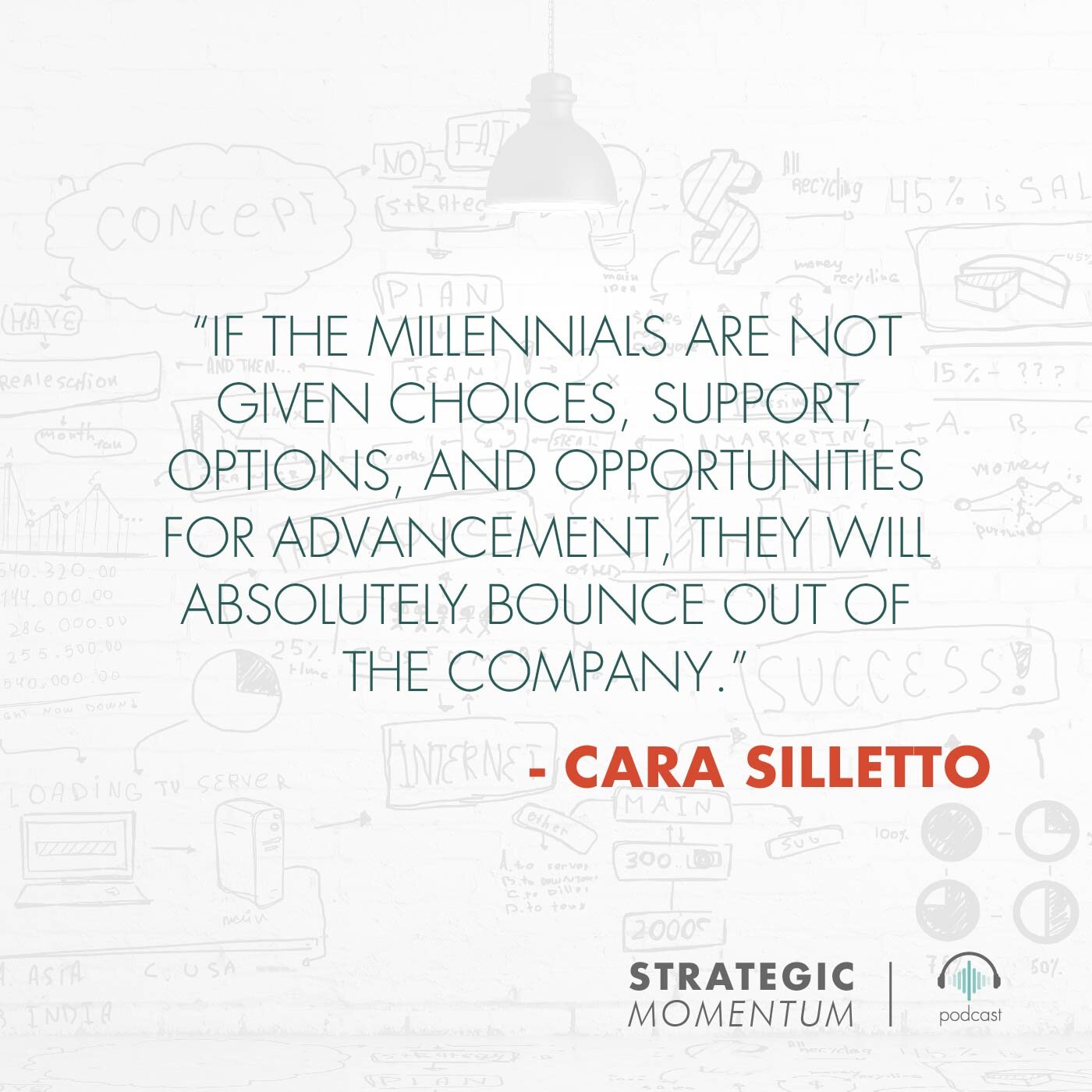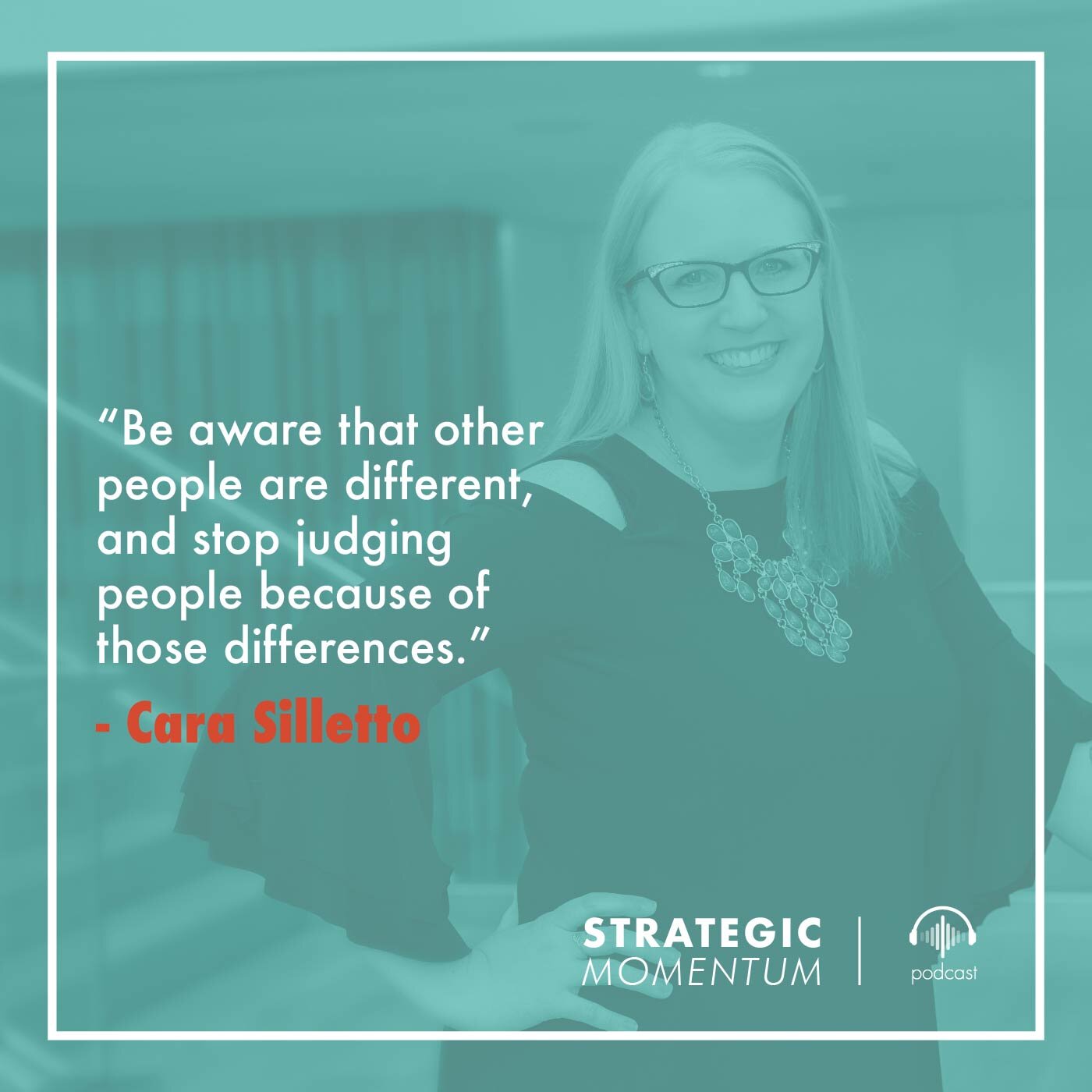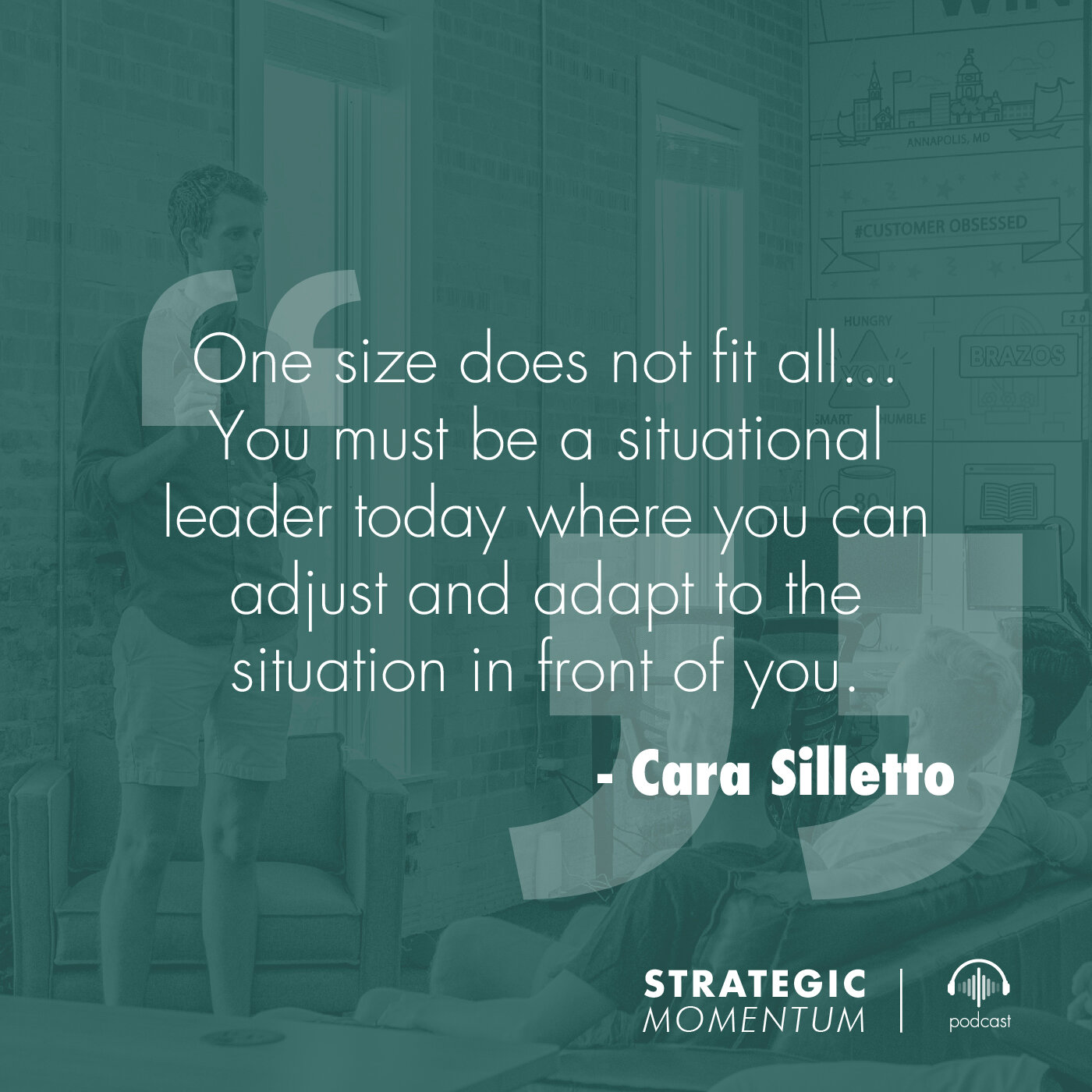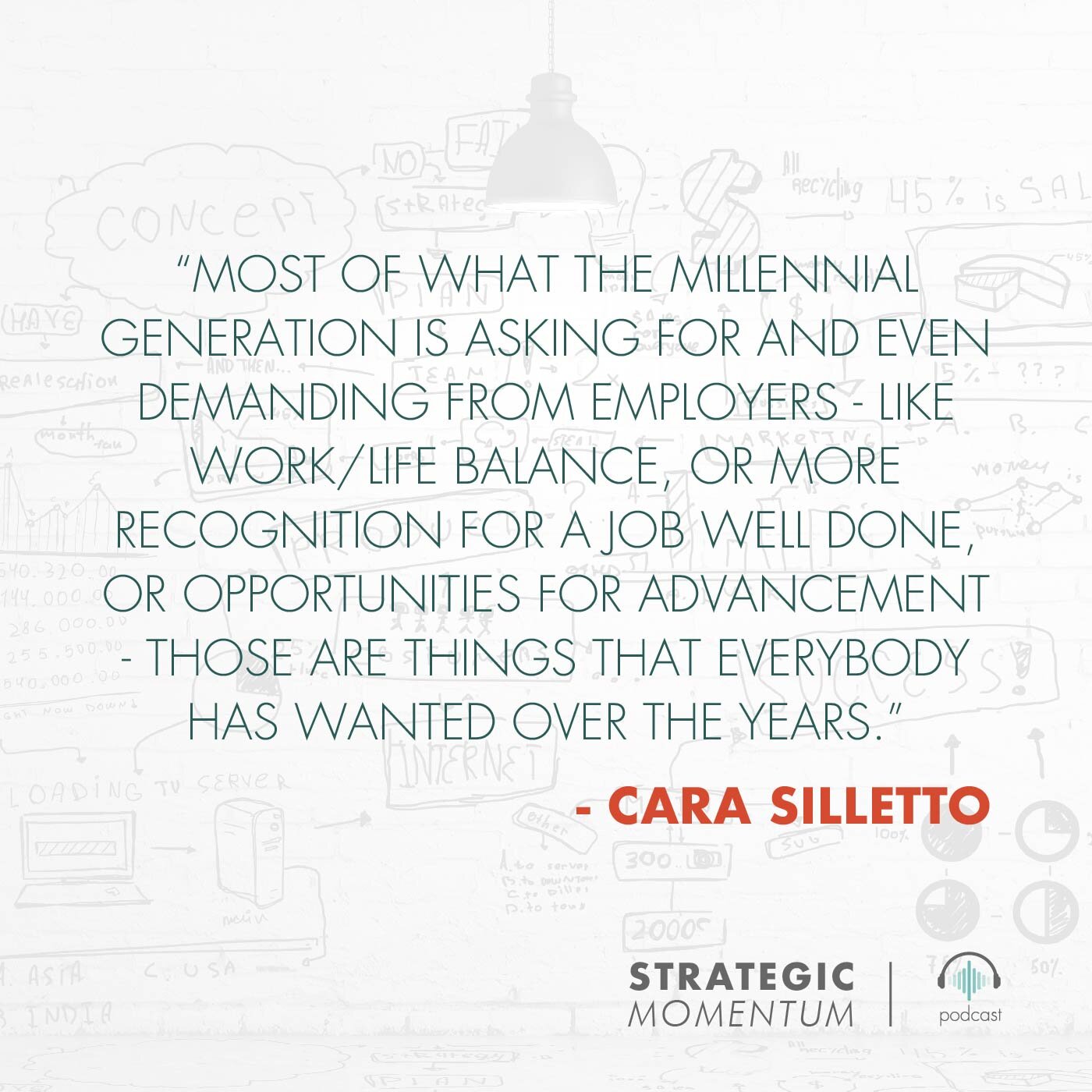Ep. 53 - Bridging the Gap between Generations to Drive Retention and Workforce Momentum - with Cara Silletto
Find Us Wherever You Listen To Podcasts
Bridging the generational divide is a major challenge for business leaders today. There are three generations in the modern day workplace, each with their own diverse career aspirations and expectations.
Creating an environment that leverages the talent, value, and strengths of this new workforce requires a keen understanding of their different perspectives and using an approach that ensures they collectively build momentum for your organization.
Cara Silletto is workforce thought leader in employee retention and the author of Staying Power: Why Your Employees Leave and How to Keep Them Longer. As President and Chief Retention Officer at Crescendo Strategies, she works with companies to reduce unnecessary employee turnover by bridging generational gaps and making managers more effective in their roles.
Today, Cara shares insights into the mindset differences of Millennials, Gen Xers and Baby Boomers and how to apply these important perspectives to effectively manage and retain your workforce -- because a sustainable and productive one can only be achieved when everyone has a common understanding of one another.
Learning from Her Own Millennial Journey and Listening to the Market
Cara’s early business career was in training and development, with a focus on helping people reach their potential. When she later realized her work-life balance goals required more control of her own destiny, she chose to start a consulting business focused on helping startups with their business plans after getting her MBA in Entrepreneurship.
However, Cara found that this wasn’t going to be sustainable given that she “realized pretty quickly that [she] was not a fan of telling people their baby was ugly” — and that happened quite often as her clients didn’t do their financial analysis or market research.
She had also been offering general consulting in the training space and identified a recurring challenge facing business leaders: understanding and working with Millennials. Working with this new talent pool was proving a stumbling block for many companies.
Cara, a Millennial herself, had also overcome her own personal difficulties when she initially entered the workforce, in terms of managing prevailing expectations and viewpoints of what other generations deemed appropriate. She began to examine what made her generation different from those that preceded it and, as a result, became deeply interested in understanding the business problems generated by the conflict and frustration around the generational gaps. She realized these issues were resulting in a lot of employee turnover.
And this passion for understanding the “why” behind such behavior lead Cara down the path of doing what she does today.
Drivers Behind the Millennial Mindset
Millennials desire flexibility and work-life balance—something that is yearned for across generations. The difference, now, is that this is demanded by the Millennial workforce.
They also expect training, options (like their schedule, location, dress code), and ongoing advancement opportunities. Otherwise, they will bounce out of a company. Coupled with a prioritization of mobility over stability and continual recognition for their work, these expectations have created friction in the workplace.
What’s critical, Cara stresses, is the importance of understanding the “why” behind their different views of the world.
Millennial children grew up in a world with options and an emphasis on having a voice — luxuries that weren’t typically afforded to earlier generations. Early Millennials grew accustomed to choosing their preferred food at mealtimes, receiving the gifts that they wanted for Christmas, and generally having equal input into family decisions. Their family dynamic was not a top-down hierarchy and a do-as-you’re-told mentality.
“These younger folks who grew up, and came into the work world when I did, and we were used to having a voice, and a vote, and a say in things.”
The advice that they had received from their parents was also not one of company loyalty, stability, and the need to pay your dues. Rather, their parenting mantra, unlike their parents before them, was about ensuring you weren’t being taken advantage of, that you saw some type of personal benefit while still doing the best job you could. They were encouraged to follow their passion because life is short (which translated into the “you only live once” mentality).
This, coupled with an egalitarian upbringing, shaped Millennials needs, perspectives, and behaviors in a work environment – which are not necessarily shared with the older generations.
However, Cara tells us that it’s important to realize that these expectations are also shared by those in other generations and not just the Millennial cohort, and thus shouldn’t be limited by age. It really is a cross-generational mindset, as others have shared these same desires but haven’t had the power in numbers to affect change in the same way.
Breaking Through Requires Understanding the Spectrum of Perspectives and Situational Adaptation
In contrast to the Millennial generation, business leaders (often those from the GenX or Baby Boomer generations), grew up in a hierarchical work environment where it was accepted that "You have to pay your dues. You have to wait and be patient."
Millennials, given their upbringing, see the workplace as a wheel and spoke structure — one where everyone brings value to the organization and should be recognized for their contributions.
How productivity is perceived is also a point of contention. This notion of visibility and “first-in-and-last-out” as the barometer of productivity and value is representative of the “traditional” mindset. Yet, that was during a time where an employee had to be at their desk (or some physical and centralized location) to ensure the work was completed.
But technology has created a completely different way to work and stay connected. So, Cara works with her clients to understand that there is no longer one way of working that will yield the desired results.
In the end, what does it take to find common ground amongst the generations? It simply comes down to clearly communicating expectations and subsequently adjusting and adapting to the varying situations and diverse workforce that exists.
Cara’s Career Advice
“Watch and observe. See what's going on. Don't just focus on yourself, and where you're headed, and how you want your career to progress, but look around at what's working for people.”
“Understand how your business and how your industry operate and make money beyond your job and your role or even your department. And then, you can find ways to bring more value to the organization, which they should recognize, and then be able to put that value back on you.”
Key Takeaways:
Creating workforce harmony requires understanding that each generation (Millennials, Generation X, and Baby Boomers) has its own expectations and goals. Stop judging them because of those differences and try to see the world through their lens.
Catch yourself if you start to get judgemental of others and realize that there are varying ways to work and live.
The needs, expectations, and goals that are prevalent with the Millennial generation are not limited by age. It is really a “mindset” vs. an age-dependent factor that you have to be cognizant of.
The employer-employee relationship is seen as fundamentally different today and Millennials don’t see anything as guaranteed, given what they saw their parents undergo on the job. There has to be a mutual benefit for both parties. Otherwise, employees will leave.
Fluidity is critical to success; there is more diversity than ever in the workplace and ‘one size fits all’ is no longer a productive standpoint.
Bridging the generational gap requires flexibility. Remember there are a spectrum of perspectives across the workforce and that there is no one right way of operating.
Advice for Millennials (and those with a Millennial Mindset)
Don’t just focus on yourself and your career progression. Watch and learn to see what is really going on and what’s working for others.
Understand the reasons behind what’s working within your organization and how people are getting those new opportunities or promotions.
Analyze the dynamics and outcomes vs. immediately getting frustrated, blaming other people, and assuming you aren’t getting what you want compared to others.
Look at your career path holistically, rather than making snap decisions.
Have more patience and truly master what it is that you are doing
Realize that your moves may need to be lateral or even a step back to achieve the goals you want.
Take constructive criticism. See challenges as a chance to grow. But if the dissonance never seems to dissipate, trust your instincts if you need to move on.
Don’t be narrowly and inwardly focused. Understand how your business/industry operates and how it makes money. Then, see how you can take your role to the next level by taking those considerations into account and subsequently delivering value to your organization based on this knowledge.
Advice for GenXers and Boomer Bosses
Understand that a top-down, hierarchical model of work isn’t going to be sustainable for those with a Millennial mindset. Rather it is a wheel and spoke type structure where everyone offers value because you need all frontline workers for a business to run.
As a business leader, shift from the traditional mindset of what makes a good employee:
‘First in, last to leave’ is no longer the model for identifying the hardest worker.
Visibility at the office does not equal productivity.
Measure results instead of hours worked.
Realize that Millennials expect choice, support, opportunities for advancement, control, and a work/life balance. They are prepared to leave for another job if these expectations aren’t met. (Today, it’s an employee’s market.)
Offer employees options in various facets of work life. Millennials are demanding optionality in areas that Generation X have also wanted choice, including;
Scheduling
Education and training
Advancement
Mobility
Dress code
Update the promotional process to increase employee retention.
Provide new incentives that are superior to your competitors.
Use creative advancement policies. Build out new levels for employees to utilize as stepping stones, rather than the traditional flattened hierarchy.
Clearly communicate your expectations because people can’t read your mind and don’t see the workplace in the same way you do anymore. Many are getting mixed messages or no messages at all and not even articulating what the standards have even been.
In the end, it’s better to be proactive and explain the written and unwritten policies, than to allow workplace dissonance to build.
Realize that one size does not fit all so you must be able to adjust and adapt to the varying situations and diverse workforce that exists.
Resources:
Connect with Cara via Linkedin
Learn more about Crescendo Strategies
Buy Cara’s book Staying Power: Why Your Employees Leave and How to Keep Them Longer
Subscribe to the Strategic Momentum podcast:
On Spotify












